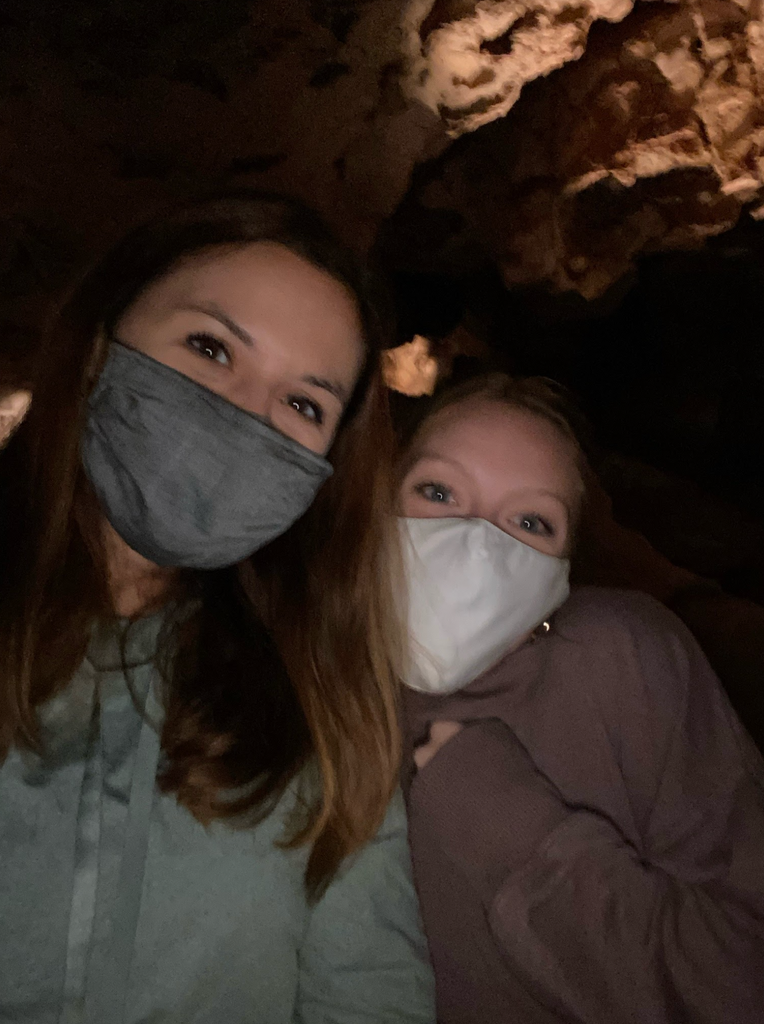Team ADG Explores South Dakota's National Parks! - Part #2
Last week, we followed intrepid ADG adventurers Molly Mann and Ally Cizowski on the first leg of their journey to South Dakota's many National Parks, State Parks, and National Memorials. The dynamic duo hit the ground running by exploring Mt. Rushmore National Memorial and Custer State Park.
By the end of their second day in South Dakota, Molly and Ally had already hiked prairie trails, taken selfies with four U.S. Presidents at Mt. Rushmore, driven next to huge herds of buffalo, wound through granite spires and needle tunnels, and ridden horseback through South Dakota forests, valleys, and creek beds.
But that was only the first leg of the adventure! Starting on Day #3, the explorers would leave the Custer area and head south to Wind Cave National Park!
Day #3... Wind Cave National Park!
Wind Cave National Park was established in 1903 by President Theodore Roosevelt, making it the seventh National Park on the roster and the first cave to be designated as a National Park anywhere in the world. Wind Cave is the densest cave in the world, with the greatest passage volume per cubic mile. While the cave formations are the most notable feature of the region, the park also protects the largest remaining natural mixed-grass prairie in the nation.

Intrigued by the unique beauty and wonder of this underground world, ADG explorers Molly and Ally visited the cave on their third day in South Dakota, starting with the famous Garden of Eden Tour. This tour was about an hour-long, and it enabled the girls to learn a lot about the geological and anthropological history of the cave system.




After the tour was over and the guide brought the visitors back to the surface, Molly and Ally explored the park above ground too. There were several trails crisscrossing the prairie around and beyond the cave entrance, so Molly and Ally got to experience the almost surreal notion of walking through a seemingly normal prairie field, all the while knowing there was a huge network of caves just below their feet!
Tips from the Travelers; Enjoying Wind Cave NP to the Fullest
When Molly and Ally returned from their trip, we asked them for tips on how best to enjoy Wind Cave National Park. Both Molly and Ally suggested taking the Garden of Eden guided tour, as that offered a comprehensive view of the cave system without involving too much scrambling or climbing.

Molly also provided a bit of a heads up, regarding cave regulations. She said that there are a number of rules for visitors to the cave, mainly regulations about what visitors can and cannot bring into the cave. Also, there is zero cell phone reception in the cave, and visitors must stick together! Good advice, as visiting the caves would be fun, but getting lost in them would not!
Ally's biggest takeaway and tip for Wind Cave National Park was the fascinating aspects of the cave's Indigenous history and the significance of the cave system to Lakota tribes that had populated the area for centuries. More on the Indigenous history of the caves in the next section!

Both Molly and Ally also strongly recommended exploring the paths and trails above Wind Cave, as they offer a beautiful glimpse at what the South Dakota prairies look like when left undisturbed. The trails, fresh air, sunshine, and wide-open spaces offer a pleasant and stark contrast from time spent in the caves. Unique in this way, Wind Cave National Park truly does offer two wildly different experiences, above ground and below!
An Origin Story; Centuries of Indigenous History in Wind Cave
One of the most intriguing features of Wind Cave National Park is the immense significance of the cave system to the Indigenous Lakota peoples who populated the region. In fact, the name "Wind Cave" was inspired by the Lakota term "Maka Oniye," which means "breathing earth."
For generations and through to the present, the Lakota people have passed oral histories of their nation's emergence down to their children, telling them that the region in and around what is now Wind Cave was sacred, sacred because it is where their people originally came from. Deeply spiritual and with great reverence for the Earth, the Lakota people believed that their ancestors lived within the caves and below the surface of the Earth and that their first emergence onto the Earth's surface occurred at what is now the main cave entrance at Wind Cave National Park.
While exploring the caves, Molly and Ally were amazed at this history and the deep spiritual significance of the caves. The reverence of the Lakotas for the caves was almost palpable in the subterranean structures.
Visitors to Wind Cave National Park can learn all about that history, and for those who have not yet traveled there, the National Park Service details the Lakota history within and around the caves on their website.
Poster Art of Wind Cave National Park and Other South Dakota Favorites
Our award-winning poster artists at Anderson Design Group have created two vintage-styled renditions of Wind Cave National Park, rendered in the tradition of early-20th century poster art.

In addition to the original poster art of Wind Cave, our team has also rendered vintage poster art of several other South Dakota attractions, including Custer State Park, Badlands National Park, Black Elk Peak, Mt. Rushmore National Memorial, and a vintage illustration commemorating South Dakota State Pride.
Next Week...
Next week we'll pick back up with Molly and Ally as they journey into the third section of their trip, exploring the unique wilderness of Badlands National Park!
See you next week!
-Ren Brabenec
Anderson Design Group Staff Writer
← Older Post Newer Post →

